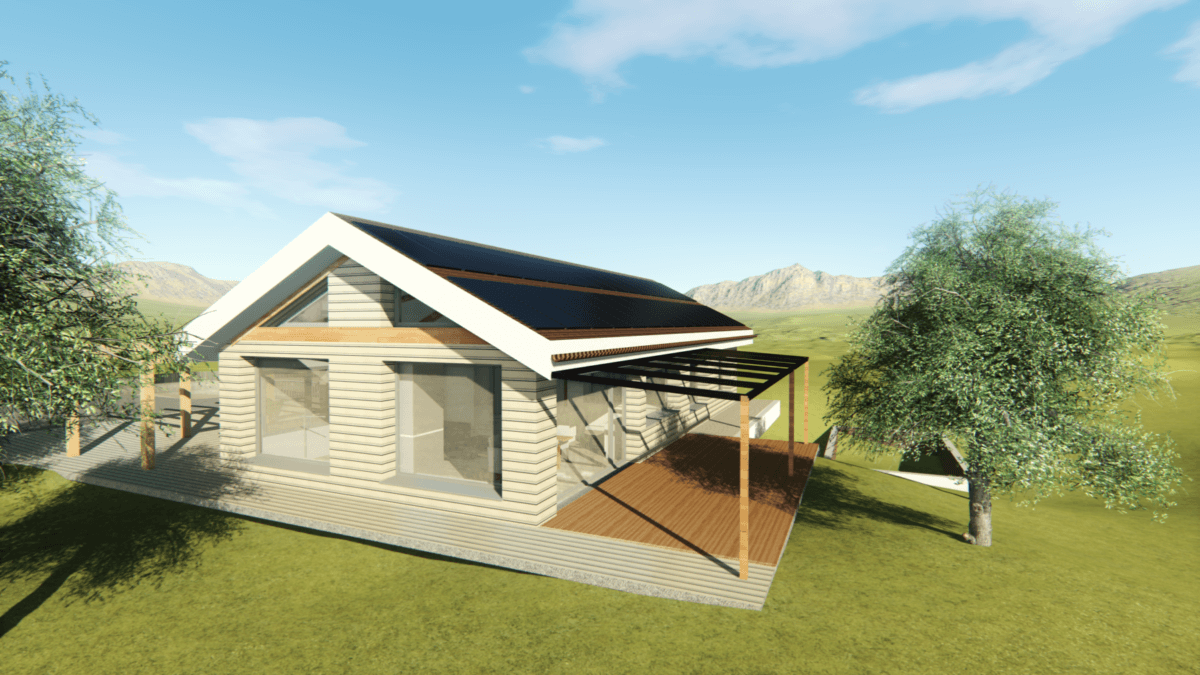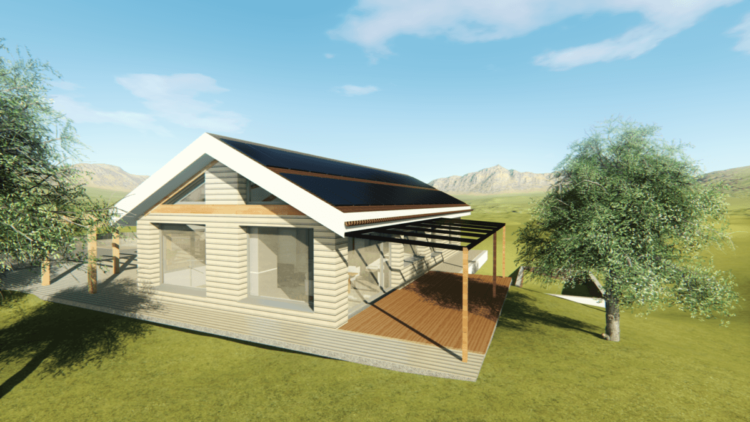Description
A house in a frontier environment and set to encourage freedom as a super-insulated and permanent tent within an inland southern New Zealand basin. A landscape of big sky and barren, open ground with extremes of temperature interchanging between winter permafrost and summer arid heat.

Of pioneer gold panning tent villages, summer holidays and wild thyme plains. Sheltering against a southern plantation forest, the house shapes to Antarctica’s Roaring Forties weather to generate a series of intermediary protective spaces interspersed with pathways and water channels connecting and fingering to the landscape.

The wilderness remains unadorned and wild; fence free. The house places an externally insulated concrete core, as ‘tent’, beneath a sheltering ‘fly’ to articulate an interior. Planning follows the patterns of a braided river connecting the independent guest accommodation, garaging and entry, to the northwestern open living area.

Program for the home’s two inhabitants meanders between the edge condition of perimeter hallways to form a collection of hobby and retreat spaces hunkered away from the elements. An anti-villa approach, providing variance to life’s internal pathways when the conditions simply prohibit external activities.

Tent walls provide a generic palette upon which to measure the changes in season and are continually finished externally and internally in a uniform renderer. Fly roofs constructed from freezer panels resist the elements and provide summer shade, while being tilted and sheen finished to reflect and share low level winter light.

Retreat sitting, library, bedroom spaces are then comforted back within the tent and enclosed and warmed with timber linings away from the extremes of the exterior environment. Hints of yellow to joinery references the owners art collection and initiates the eclectic camp-style arrangement of furniture and a life now equipped to wilderness.













